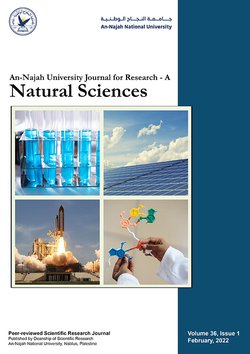Chemical composition and physiological bioactivities of Stiefia multicaulis (Vahl) Soják Vahl grown in Palestine
Authors:
Article info
2024-05-01
2024-06-18
2024-10-30
None - None
Keywords
- Antioxidant;
- α-Amylase
- α-Glucosidase;
- multicaulis;
- Antilipase;
- Stiefia
Abstract
Background: Herbal products encompass a wide range of natural substances that show great potential as therapeutic materials. Consequently, there has been a substantial investigation into the therapeutic potential of numerous plant species in recent times. The present study sought to determine the components and assess the antioxidant, antilipase, α-amylase, and α-glycosidase enzyme inhibitory activities of Stiefia multicaulis (Vahl) Soják Vahl hexane, acetone, methanol, and aqueous fractions. Methods: Standard pharmacopeia methods were used to conduct screenings for both quantitative and qualitative phytoconstituents. The lipase, α-amylase, and α-glycosidase enzyme inhibitory activities were assessed using established reference methods. In addition, the antioxidant activity was assessed using a 2,2-diphenyl-1-picrylhydrazyl (DPPH) assay. Results: The screening methods of pharmacopeias revealed that S. multicaulis contains a wide range of secondary metabolites, especially tannins. However, the most potent antioxidant, antilipase, α-glucosidase, and α-amylase inhibitory activities were acetone fraction, hexane, methanol, and aqueous S. multicaulis fractions, respectively. Conclusion: The current study outcomes are the first on the α-amylase, lipase, α-glucosidase inhibitory activities of S. multicaulis four solvent fractions. Further investigations are needed to assess the in vivo potential of these plant fractions in animal models.
Chemical composition and physiological bioactivities of Stiefia multicaulis (Vahl) Soják Vahl grown in Palestine
المؤلفون:
معلومات المقال
2024-05-01
2024-06-18
2024-10-30
None - None
الكلمات الإفتتاحية
- Antioxidant;
- α-Amylase
- α-Glucosidase;
- multicaulis;
- Antilipase;
- Stiefia
الملخص
Background: Herbal products encompass a wide range of natural substances that show great potential as therapeutic materials. Consequently, there has been a substantial investigation into the therapeutic potential of numerous plant species in recent times. The present study sought to determine the components and assess the antioxidant, antilipase, α-amylase, and α-glycosidase enzyme inhibitory activities of Stiefia multicaulis (Vahl) Soják Vahl hexane, acetone, methanol, and aqueous fractions. Methods: Standard pharmacopeia methods were used to conduct screenings for both quantitative and qualitative phytoconstituents. The lipase, α-amylase, and α-glycosidase enzyme inhibitory activities were assessed using established reference methods. In addition, the antioxidant activity was assessed using a 2,2-diphenyl-1-picrylhydrazyl (DPPH) assay. Results: The screening methods of pharmacopeias revealed that S. multicaulis contains a wide range of secondary metabolites, especially tannins. However, the most potent antioxidant, antilipase, α-glucosidase, and α-amylase inhibitory activities were acetone fraction, hexane, methanol, and aqueous S. multicaulis fractions, respectively. Conclusion: The current study outcomes are the first on the α-amylase, lipase, α-glucosidase inhibitory activities of S. multicaulis four solvent fractions. Further investigations are needed to assess the in vivo potential of these plant fractions in animal models.
Why should you
Publish With Us?
An-Najah National University
Nablus, Palestine
Nablus, Palestine
- P.O. Box
- 7, 707
- Fax
- (970)(9)2345982
- Tel.
- (970)(9)2345560
- (970)(9)2345113/5/6/7-Ext. 2628
- [email protected]
- EIC
- Prof. Waleed Sweileh
An-Najah University Journal for Research - A (Natural Sciences) by An-Najah University, Nablus, Palestine is licensed under CC BY-NC 4.0
